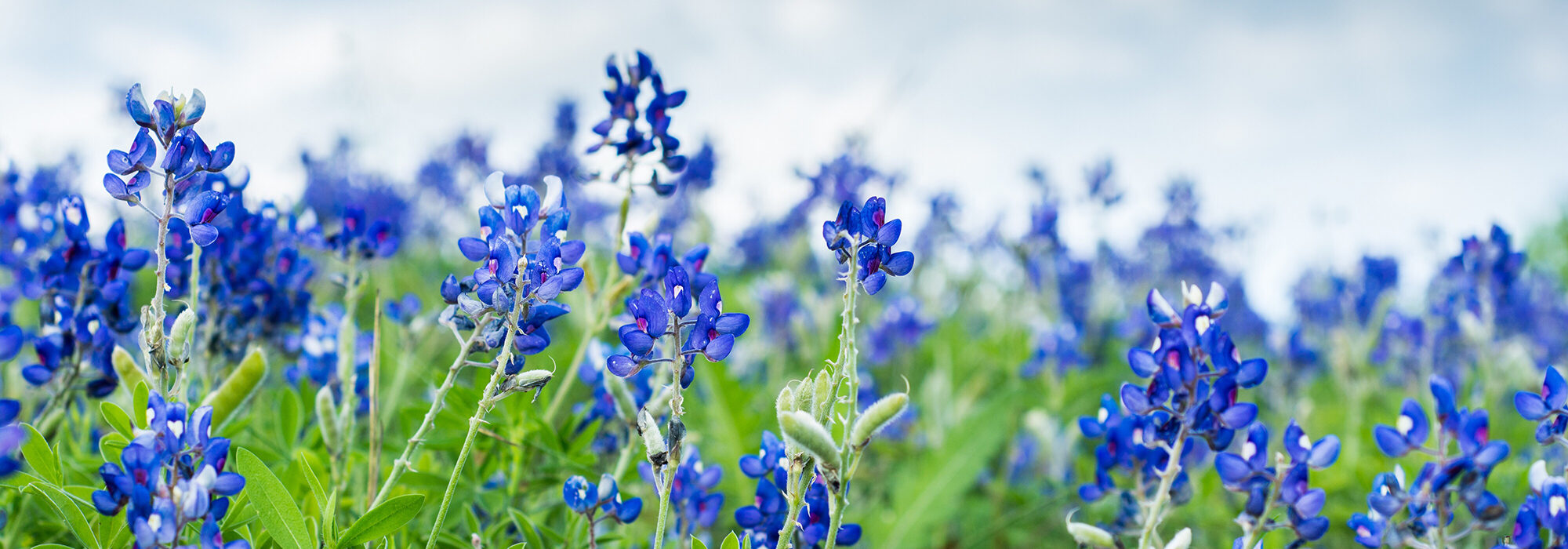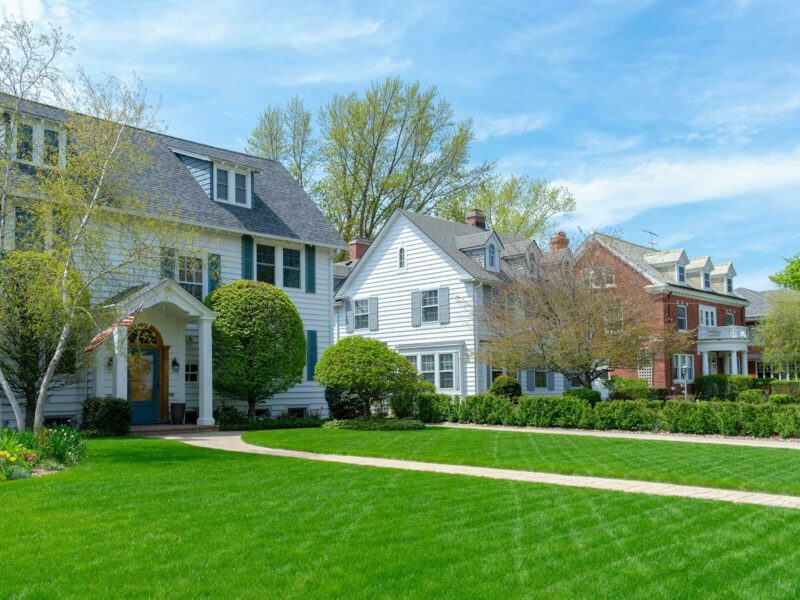Article Excerpt
These Texas-native landscapes are reimagining traditional home landscaping. Let’s see which specific rocks and plants give them that modern Texan look!
Thoughtfully planned outdoor living spaces have become one of the nicest home improvement projects as families seek to spend more quality time outdoors. Indoor-outdoor “flex spaces” are growing in popularity. According to the Home Improvement Research Institute, landscaping and decks were the focus of much home improvement activity in 2020 with the trend continuing into 2021.
In Texas, native landscaping includes a wide variety of plants – one of the many benefits of living in our large, temperate state. Whether you reside in the Piney Woods of East Texas or the Gulf Coast, native landscaping adds natural beauty and value to your home.
Getting Started with Native Plants
When looking for native plants, you should consider factors such as tolerable temperature ranges, moisture, soil, winds, and pest tolerance. These can vary by region.
Texas A&M AgriLife Extension provides an extensive list of natural and sustainable foliage by region.
Your first decision will be lawn turf. In Texas, Buffalograss or Bermudagrass are two sustainable choices for lawns, requiring less water and maintenance than other grasses like the ever-popular St. Augustine.
North-Central Texas
Limestone terraces surrounded by native plants lead to the main living area of this quiet abode in Vanderpool, Texas. Loblolly Pine, Chinkapin Oak, and Southern Magnolia are great choices for native trees in this area. Ash Juniper, Nandina, and Lantana are shrubs that are also well-suited to North and Central Texas.
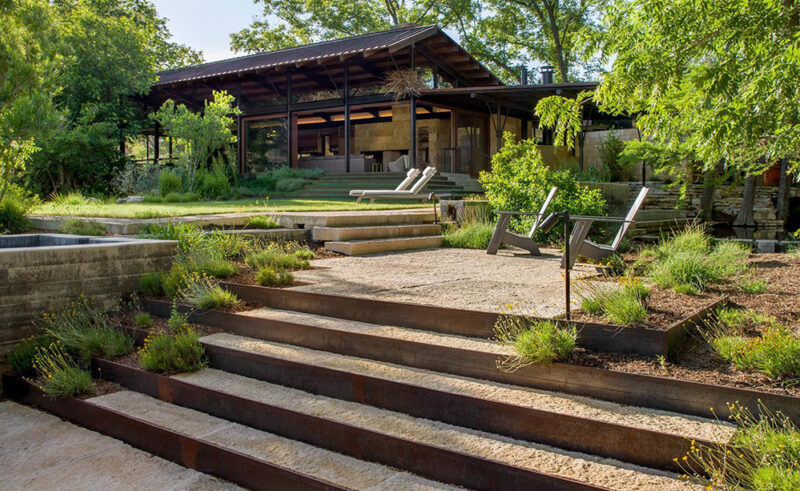
Photo credit: Bill Timmerman
Northeast and East Texas
This home in Trinidad, Texas, minimized tree loss and used a restrained palette of wood, stone, concrete, and weathered steel that reflects, rather than competes with, the native environment. In this photo, you see Pine Trees. Leyland Cypress and Creeping Juniper are also good choices, as well as American Sweetgum and the Texas Persimmon.
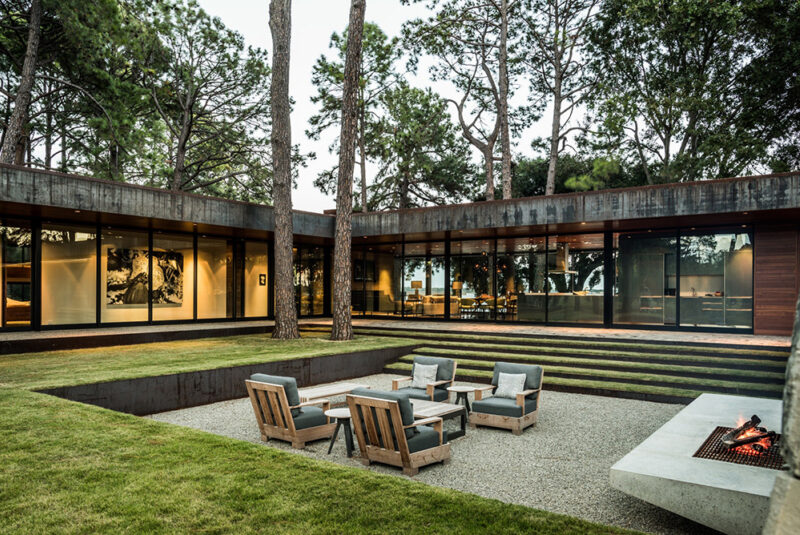
Photo credit: Hocker Design Group
Black-eyed Susans are often used for low-growing layers in flower beds. This native flower is a favorite of butterflies and gardeners. It’s drought-tolerant and not part of a deer’s diet!

Photo credit: user Sapaulson on Pixabay
South-Central Texas
Mature Pecan Trees, along with a natural water source, provide a peaceful setting. Like oaks also provide a serene, shade-producing umbrella over your yard. They remind Texans of Sunday afternoon Blue Bell on grandma’s porch.
Texas Red Oaks and Redbuds add a shade of color to your upper canopy. Native shrubbery includes Dwarf Crape Myrtle and Boxwoods.
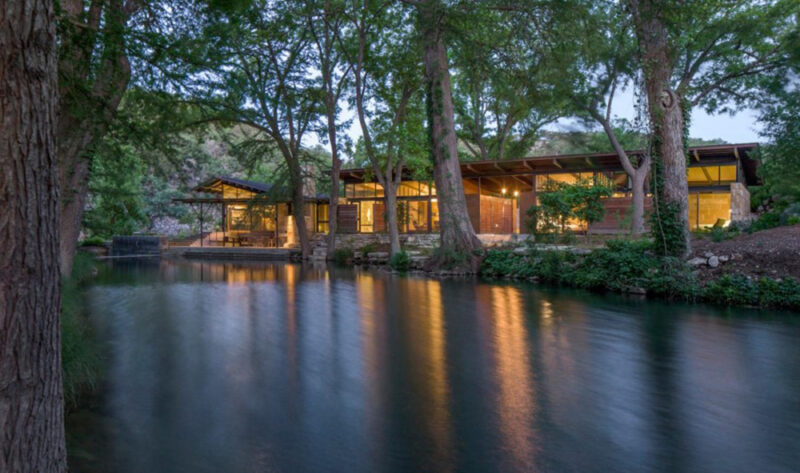
Photo credit: Lake Flato Architects
West Texas
This historic West Texas ranch is located in little Marfa, Texas. Ornamental grasses add soft touches throughout. Small Texas Mountain Laurels are used in this region due to their beauty and sweet fragrance. Rosemary is another sweet-smelling addition that’s well-suited to dry areas. Larger trees like Black Locusts and Chinaberries feature unique little flowers and berries. They’re definitely conversation-starters for the garden-inclined!
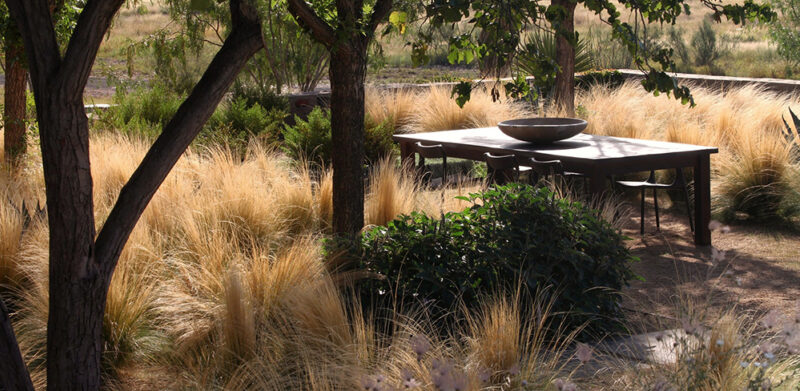
Photo credit: Terry Moore, Christine Ten Eyck, Trish Bigler
Texas Mountain Laurel is a small evergreen tree that produces colorful, sweet-smelling clusters of blooms. It prefers rocky limestone soil and is native to central and west Texas.

Photo credit: GeorgeB2 from Pixabay
Benefits of Going Native
Firstly, we Texans are proud of our beautiful state! But there are plenty more reasons to choose native plants when mapping out your next big yard project. Native plants will:
- Require less maintenance compared to introduced species
- Tolerate and resist local diseases, pests, and drier areas
- Provide habitats and food for birds, butterflies, and pollinating insects
- Minimize the use of fertilizers and pesticides
- Conserve water
Considering an Outdoor Project?
If you’re considering purchasing a home that needs landscaping but you have limited cash, a renovation loan may be a great solution. Renovation loans are rolled into your home purchase or refinance. Start your pre-approval process today!
